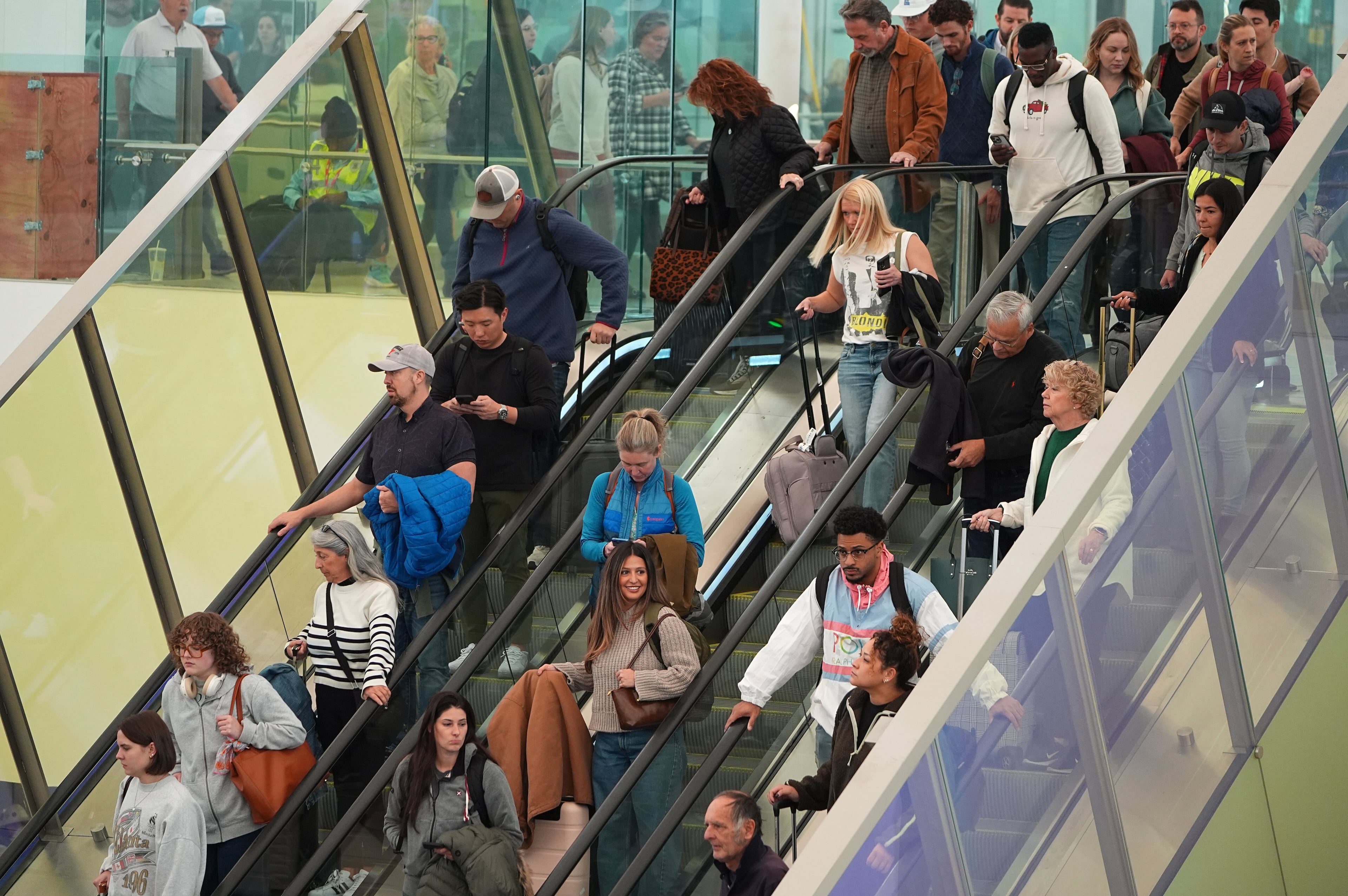There's no timeline on when flight cuts will ease up after the government shutdown ends

Airlines have canceled more than 9,000 flights across the U.S. since the Federal Aviation Administration ordered flight cuts last week to ease demand on control towers, which are short-staffed during the federal government shutdown.
Although the government appears set to reopen in the coming days, airport disruptions, flight cancellations and economic losses won’t disappear right away.
Here’s how the air travel network is being impacted:
Flights remain disrupted as the shutdown nears an end
Another 1,200 domestic flights were canceled Tuesday as the FAA increased its target for cutting flights at the nation’s busiest airports to 6%, up from 4%. There were fewer cancellations than in recent days, which Transportation Secretary Sean Duffy attributed to more air traffic controllers returning to work after news of a shutdown agreement.
Cancellations and delays also piled up due to ripple effects from flight cuts and severe weather. FAA air traffic chief Frank McIntosh said the agency restricted large sections of airspace over the weekend “to slow the entire country down, which forced massive cancellations and delays.”
Flight cuts won’t end until the FAA sees safety improve
The FAA hasn’t said when it will roll back flight limits. Duffy reinforced Tuesday that the cuts will remain — even after the shutdown ends — until safety metrics improve and staffing levels stabilize at air traffic control facilities. The cuts are set to rise to 10% Friday.
Duffy has declined to share the specific safety data that prompted the flight cuts. But in a news conference at Chicago's O'Hare airport, he cited reports of planes getting too close in the air, more runway incursions and pilot concerns about controllers' responses.
Air traffic controller shortages won’t go away either
The nationwide shortage of controllers isn’t new, but the shutdown likely made it worse, with Duffy saying that 15-20 controllers are retiring every day and some younger controllers leaving the profession. And it doesn’t take many controller absences to create problems. During the shutdown, a number of controllers who weren’t being paid called off work as they dealt with increased stress and the need to take side jobs to cover their bills.
Airlines will need to readjust after the flight cuts are lifted
The flight restrictions upended airline operations in just a matter of days. Many planes were rerouted and aren’t where they’re supposed to be.
Former FAA official Mike McCormick expects operations to recover within days, similar to after a major snowstorm. Eric Chaffee, a Case Western Reserve professor who studies risk management, warned the disruptions could last weeks as airlines face “complex operational hurdles” and winter weather complicates recovery before Thanksgiving.
“It’s similar to if you start pulling threads out of a tapestry,” Chaffee said. “What you may find is that lots unravels in addition to what you are trying to remove.”
Holiday travel outlook darkens amid persistent disruptions
The pace of airline ticket sales for Thanksgiving travel has slowed as travelers reconsider flying. Aviation analytics firm Cirium said ticket sales during the busy late November season are still expected to be up over last year, but only slightly.
Major airports bear the brunt of flight cuts
Hub airports in Denver, Atlanta, Chicago, Dallas and the New York area have seen the bulk of the cancellations. They’ve also been plagued by long delays caused by staffing shortages in regional air traffic control centers and towers. Smaller regional airlines like SkyWest and Republic have been hit hardest because they fly many of the regional routes being dropped by the major airlines.
Trump's post demands controllers get back to work
The head of the air traffic controllers union said controllers were not staging an organized walkout and remain committed to their jobs. However President Donald Trump on Monday blasted those who’ve taken time off during the shutdown, posting on social media “get back to work, NOW!!!” He also called for docking their pay while giving $10,000 bonuses for those who stayed.
Airlines face mounting losses
Canceled flights and mounting delays are adding to big losses for the airlines. The lost revenue is likely to add up to “hundreds of millions of dollars a day,’’ said Greg Raiff, CEO of the Elevate Aviation Group. He expects the toll to show up when the airlines start issuing earnings warnings for the fourth quarter.
Millions of people were affected
An estimated 5.2 million passengers have been affected by staffing-related delays or cancellations since the government shutdown began on Oct. 1, according to Airlines for America, an industry trade group.
Henry Evans, a University of Michigan student, expected to fly Delta to Detroit on Sunday after visiting family in New York.
But after repeated delays the flight was canceled, so Evans rented a car and drove nine hours through the night to make his Monday morning classes in Ann Arbor.
Two rental counters told him they were out of cars that night. “I got a sense that a lot of people were doing a similar thing to me,” he said.
___
Yamat reported from Las Vegas, Funk from Omaha, Nebraska, and Seewer from Toledo, Ohio. Associated Press writer Sarah Raza in Sioux Falls, South Dakota, contributed.

